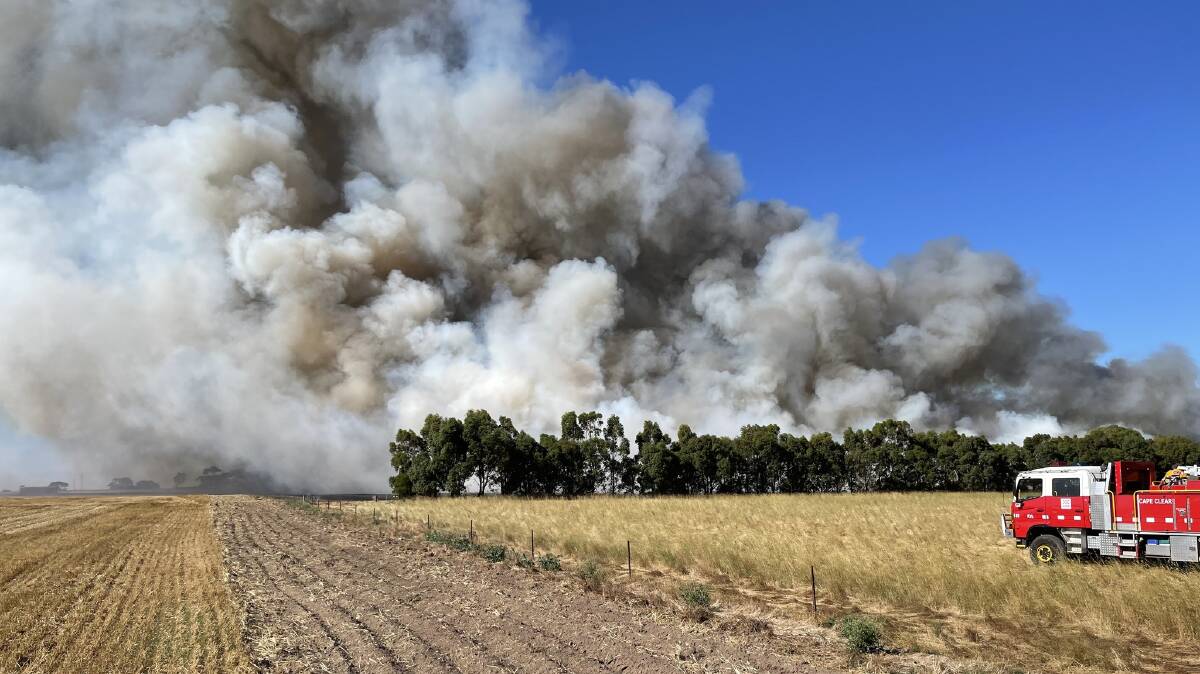Floods may be impacting some communities, but in others firefighters are battling to control grass fires as strong winds whip blazes through dried grasslands.
El Nino weather patterns could return as early as June which will bring drier, warmer weather to areas with high fuel loads.
There has been an increase in fire activity in north-western NSW and in one week alone this month there were more than 250 grass fires.
A single blaze burning 45 kilometres south-west of Inverell has razed more than 2200 hectares, a separate one at Tallimba has burnt more than 1000ha.
In Victoria, 1400 hectares of land has been burnt in grass and bush fires so far this season, although well down on the 10,000 hectares at the same time during the 2021-22 season.
By comparison, during the 2019-20 season, 1.5 million hectares burnt in the state.
High fuel levels ready to burn

NSW Rural Fire Service acting director of community risk, Laurence McCoy, said there's a "huge amount" of growth across the state and this increases fire risk.
"The current situation has arisen over many years of above average rainfall, and that has led to significant grass growth within our central regions of the state, and we've had a shift in the climate drivers," he said.
"We're looking at a more neutral outlook at the moment and that means we're returning to more typical summer conditions."
Mr McCoy said the return of an El Nino weather pattern is significant, but it's not the only factor firefighters look at when assessing fire risk.
"Climate drivers are important in influencing our weather," he said.
"Fires arise from the interaction of weather and how dangerous the weather is - how hot and dry and windy it is; the interaction with fuel - how susceptible that fuel is to fire; and then the topography. The topography might influence how fast a fire might spread."
Not all El Nino seasons are created the same
Country Fire Authority (CFA) Deputy Chief Officer Alen Slijepcevic said previous weather patterns were also important when predicting fire risk.
"It's different when you have El Nino after 10 years of drought, and it's different when it comes three years after the La Nina seasons," he said.
Victoria's Black Saturday bushfires occurred during a weak La Nina season, but this occurred following 10-12 years of drought.
The 2019-20 bushfires occurred during an El Nino season after three years of well below average rainfall.
Further back, the bushfires of of 2006-07 occurred during a really strong El Nino season, with 1.2 million hectares of the state burnt in that year.
What's the risk?
In Victoria there's also a lot of growth due to the La Nina wet weather, but Mr Slijepcevic said harvesting has reduced fire risk.
"The landscape is broken by the land management activities, we are now past 91 per cent of the crop harvested in Victoria," he said.
"For large tracks of the land that fuel has been significantly reduced by harvesting."
Despite all the harvesting by farmers and hazard reductions by firefighters, the chance of fire can never be reduced completely.
"We will have fires, don't get me wrong," Mr Slijepcevic said. "Victoria has one of the most bushfire prone areas of the world, in every year, even in the average year, we can have a dangerous and damaging fire.
"It doesn't matter if it's El Nino or La Nina, there is a risk of a dangerous fire occurring or having a dangerous day in one season, which might create the narrative about that season at the end of it."
Big blazes to remember
The Black Summer fires of 2019-20 burned more than 24 million hectares, directly killing 33 people and almost 450 from smoke inhalation. An estimated one billion animals were killed.
The 2009 Black Saturday bushfires in Victoria caused widespread devastation and the greatest loss of life from fire since colonisation. During the emergency, 173 died, 414 were injured, more than a million animals were killed and 450,000 hectares of land were burned.
This month marks the 20th anniversary since the devastating 2003 Canberra fires. The firestorm on January 18 lasted less than 10 hours, but razed 160,000 hectares and killed four people.


